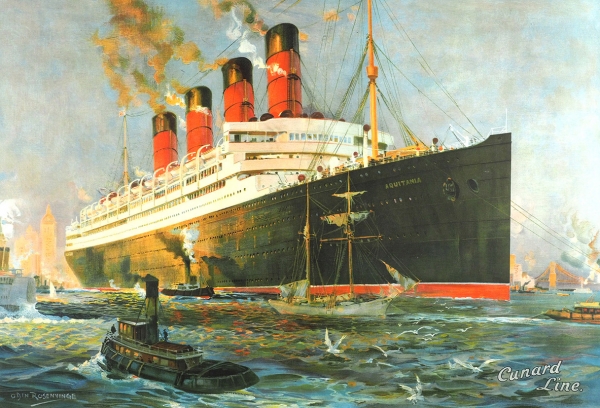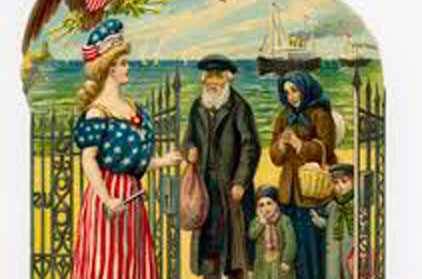
About the Joint-Stock Russian-Canadian-American Passenger Company (RUSCAPA)
The Joint-Stock Russian-Canadian-American Passenger Company, also known as RUSCAPA, was established in the early 1920s as a joint-stock company involving Russian, Canadian, and American passenger carriers. Its primary purpose was to facilitate the emigration of Soviet citizens—particularly Jews, but also Ukrainians, Germans, Poles, and Russians—from the USSR to the United States, Canada, Latin America and other destinations.
Founded about 1923 in Moscow with a capital fund of 20,000 roubles, RUSCAPA representatives in Russia and Ukraine assisted emigrants with making travel arrangements and managing exit documents and other paperwork required to leave to their chosen destinations. The company maintained extensive records, including personal files, questionnaires, medical certificates, business correspondence, receipts, personal letters, and telegrams.
More than 1,600 files, amounting to over 34,000 digital images, are held by the United States Holocaust Memorial Museum and are accessible online. The records are primarily in Russian. At least 80 per cent of the dossiers pertain to Soviet Jewish emigrants, reflecting the significant Jewish migration during this period.
Here is a sample RUSCAPA emigration questionnaire, circa 1927, showing the sort of information the documents might contain. In this case, the questionnaire pertains to Abram Yankovlevich Levin, a tailor traveling with his family from Kiev to Toronto.
RUSCAPA Emigration Questionnaire (circa 1927)
- Name: Abram Yakovlevich Levin
- Date of Birth: 15 March 1895
- Place of Birth: Kyiv, Ukrainian SSR
- Occupation: Tailor
- Family Members Emigrating: Wife (Rivka, 32), Son (Moishe, 8), Daughter (Sara, 6)
- Reason for Emigration: Reunification with family in Canada
- Destination: Toronto, Canada
- Health Certificate: Attached
- Payment Receipt: #3482, dated 10 October 1927
- Correspondence: Letter to Canadian Consulate in Moscow, dated 12 October 1927
RUSCAPA operated at a time when emigration from the USSR was highly regulated and required complex bureaucratic procedures. The company served as an intermediary, streamlining the emigration process for thousands of families seeking to leave, particularly between 1926 and 1930.
The unusual joint venture represents a unique example of early 20th-century international cooperation in the migration industry, involving both Western and Soviet entities during a period of significant political and social upheaval. Its activities played a crucial role in the history of Jewish and other minority emigration from the Soviet Union.
The Jewish Colonization Association (JCA) and Hebrew Immigrant Aid Society (HIAS) were among the primary Jewish agencies associated with facilitating Jewish emigration from Russia and the Soviet Union in that era, and may have had some connection or overlap with RUSCAPA’s activities. However, my research has not turned up any evidence of a formal partnership.
These records are not to be confused with the Russian Consular Records, nicknamed the Li-Ra-Ma papers, which are a similar but separate collection with an entirely different history, accessible at Library and Archives Canada and the U.S. National Archives.
The RUSCAPA collection is available on the USHMM website at this link.
A list of names of RUSCAPA passengers, transcribed from cyrillic into Roman (“English”) characters, is available on the Resources page of this website. ♦






